What is a run flat tire?
A run-flat tire is either a pneumatic vehicle tire specifically designed to resist the negative effects of deflation when punctured or the term may also refer to a standard wheel and tire that has a run-flat device affixed, see ‘auxiliary-supported’ below. This enables the vehicle to continue to be driven (at reduced speeds, typically under 55 mph) for limited distances (up to 10 mi depending on the tire/device).
A tire puncture for regular people is unfortunate, however a flat tire in a protective services scenario one of the most inopportune circumstances we could face while driving a client. Roadside assistance works, but waiting an hour with your principal in the car is not the answer. Similarly, changing a spare if also not ideal given those circumstances. We do have several methods of plugging a tire quickly, which we discussed in another article, linked below:
How to plug a tire: Flat tire repair techniquesRun-flat tires are meant to support the vehicle enough to maintain operable speeds in order to get out of the area or to a repair facility. If it sounds too good to be true, it probably is, right? Well everything comes with a trade-off, and we will discuss the pros/cons below.
There are three major run fat tire technologies currently in use:
Self-Supporting Tire
AKA Zero-pressure tires, are the most common technology and this is simply where the tire’s sidewalls are reinforced to support the vehicle when deflated.
Pro:
• Better blow-out stability: Steering and handling will degrade, but remain well enough considering the circumstances.
Cons:
• Rapid tread wear: J.D. Power found run-flat tires being changed 6,000 miles sooner than standard tires.
• Harsher ride from the stiffer sidewall.
Self-Sealing Tire
Rather than being designed to operate without air, this type has a layer of sealant inside the tire designed to maintain air pressure when punctured.
Pro:
• Strongly performs like and resembles a standard tire.
Con:
• Typically, this only works if the puncture is less than 5mm and is near the center of the tread.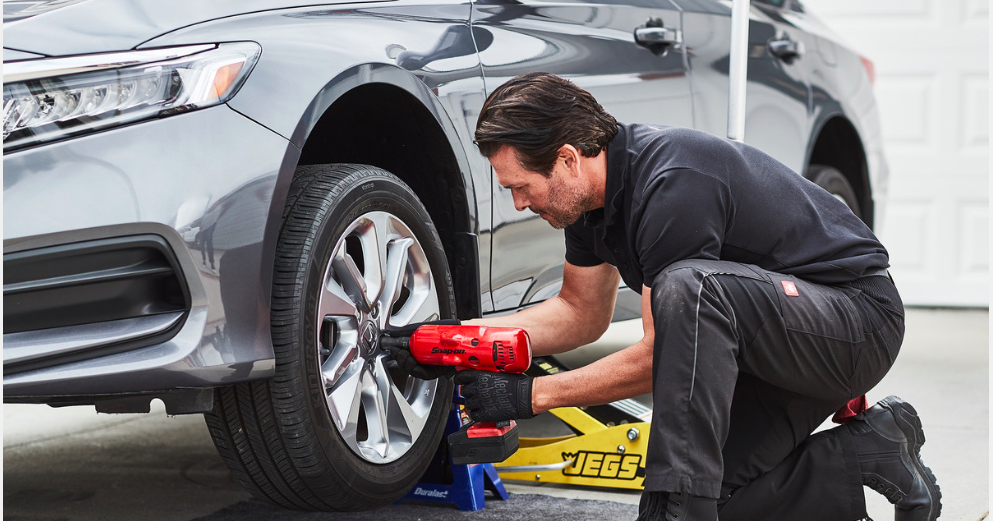
Auxiliary-supported
Using a support ring attached to the wheel, this type can support the weight of the vehicle during deflation.
Pro:
• Unsurpassed ability to carry heavy vehicle loads for long distances at high speeds.
Con:
• Lessened ‘drivability’ and potentially harsh ride from the tire ‘bottoming out’ on the device
How much do they cost?
Typical costs: Approx $200-500 per tire for a passenger vehicle, or about 50%-200% more than standard tires. Goodyear offers standard tires for $110-$200 MSRP or run-flat tires for $250 to $350 for the same application. The best benefit as to cost comes from the auxiliary supported variety in which the device can out last several tire changes, as it remains affixed to the wheel within the tire.
Should I use them?
Research your options and see what’s best for you is going to be your best answer. Take into consideration the pros/cons and make a decision based on your task, threat and environment.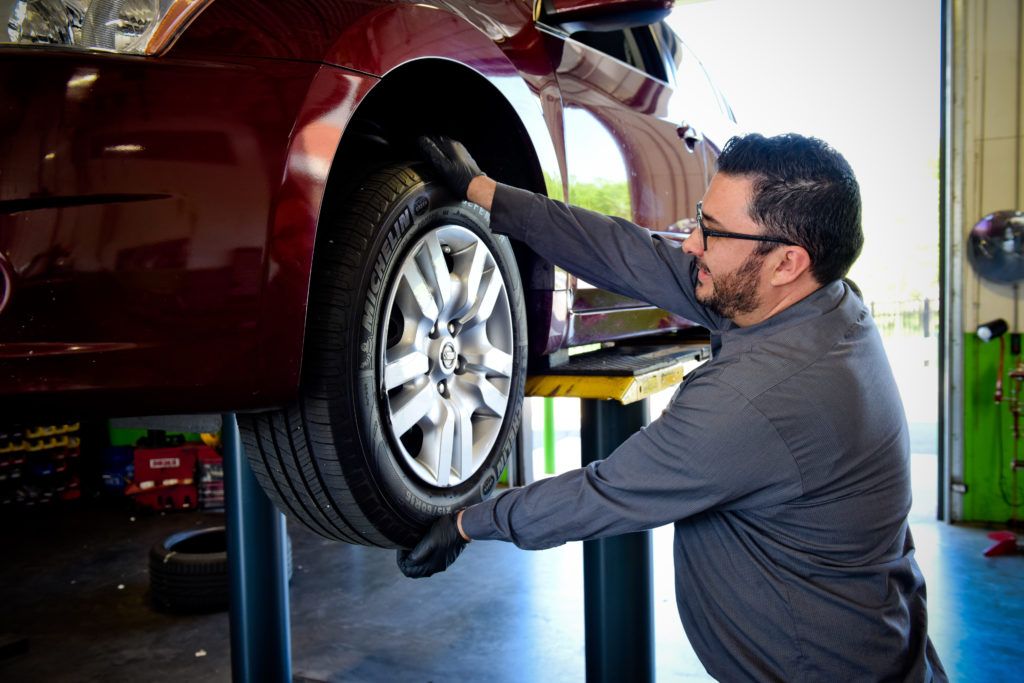
Featured Image Photo-Cred
05
Feb,
2018
Whether you experience a puncture or a blowout, it's not a good idea to drive on a flat tire to get to a tire repair shop. The only exception to this rule would be that you need to get your family to safety. Driving on a flat—even a tire with a nail still stuck in it—can cause further damage and will almost always increase your flat tire repair cost. Also, remember not to drive on a spare tire farther than the owner's manual indicates.
So, how much does flat tire repair cost? It might surprise you. A simple tire repair cost is very minimal. However, the real cost will come to you later if you neglect to have the tire repaired as soon as possible and especially if you continue to drive on it.
Of course, a flat tire repair cost depends on the extent of the damage. If you repair a simple puncture as soon as possible, it may run between $15 and $30. A simple tire service typically utilizes plugs. These should last indefinitely, but it's a good idea to regularly check the tire pressure on any tires you've had plugged.
A simple tire service typically utilizes plugs. These should last indefinitely, but it's a good idea to regularly check the tire pressure on any tires you've had plugged.
If you continue to drive with a flat tire, the repair costs will escalate, and in many cases, the tire or tires will all need to be replaced. Continuing to run on flat tires can also negatively affect the wheels, brakes, and suspension, not to mention the towing expenses that will be incurred when you are no longer able to drive your car without new tires.
Even more important than your flat tire repair cost is your safety. If you don't know how to change a flat tire or if you don't have the tools, don't try to do it yourself. It’s the smart thing to call for help!
Wondering how much does flat tire repair cost? Contact our ASE Certified Technicians at Rum River Automotive for more information about tire service and to schedule an appointment. Since 1997, our auto shop has served vehicle owners in
Princeton, MN and in the surrounding areas of Milaca, MN, and Zimmerman, MN.
Are you wondering how much does flat tire repair cost? Call the tire expert at Rum River Automotive today to know more about tire service & to schedule an appointment.
Whether you experience a puncture or a blowout, it's not a good idea to drive on a flat tire to get to a tire repair shop. The only exception to this rule would be that you need to get your family to safety. Driving on a flat—even a tire with a nail still stuck in it—can cause further damage and will almost always increase your flat tire repair cost. Also, remember not to drive on a spare tire farther than the owner's manual indicates.
So, how much does flat tire repair cost? It might surprise you. A simple tire repair cost is very minimal. However, the real cost will come to you later if you neglect to have the tire repaired as soon as possible and especially if you continue to drive on it.
Of course, a flat tire repair cost depends on the extent of the damage.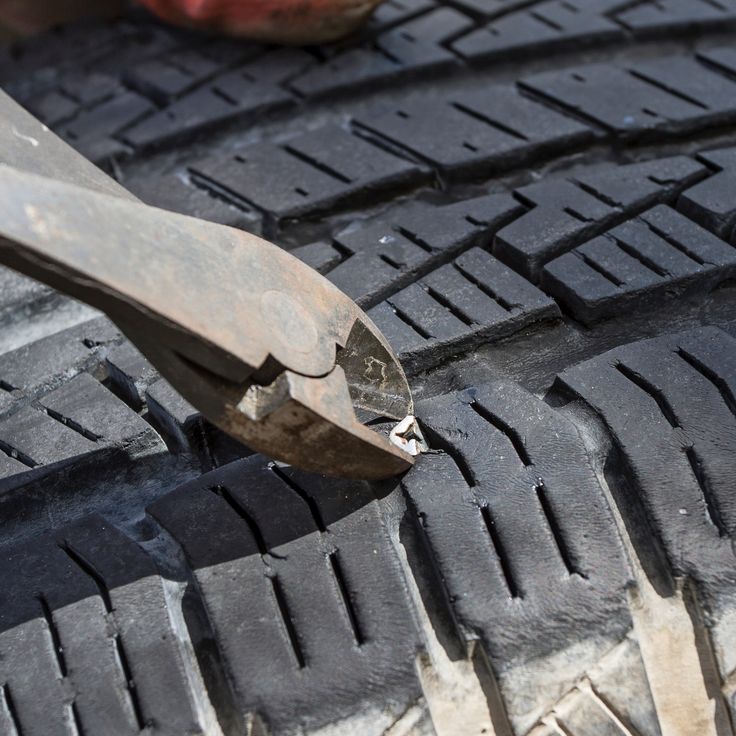 If you repair a simple puncture as soon as possible, it may run between $15 and $30. A simple tire service typically utilizes plugs. These should last indefinitely, but it's a good idea to regularly check the tire pressure on any tires you've had plugged.
If you repair a simple puncture as soon as possible, it may run between $15 and $30. A simple tire service typically utilizes plugs. These should last indefinitely, but it's a good idea to regularly check the tire pressure on any tires you've had plugged.
If you continue to drive with a flat tire, the repair costs will escalate, and in many cases, the tire or tires will all need to be replaced. Continuing to run on flat tires can also negatively affect the wheels, brakes, and suspension, not to mention the towing expenses that will be incurred when you are no longer able to drive your car without new tires.
Even more important than your flat tire repair cost is your safety. If you don't know how to change a flat tire or if you don't have the tools, don't try to do it yourself. It’s the smart thing to call for help!
Wondering how much does flat tire repair cost? Contact our ASE Certified Technicians at Rum River Automotive for more information about tire service and to schedule an appointment.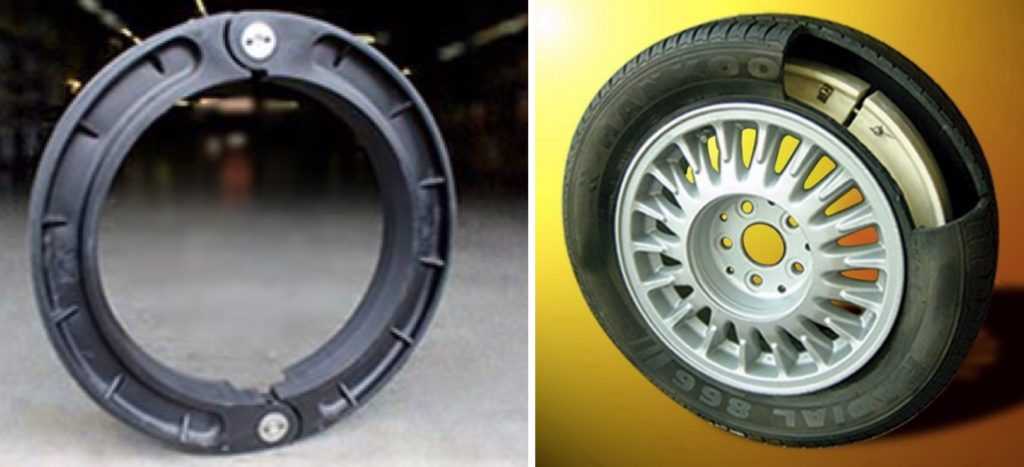 Since 1997, our auto shop has served vehicle owners in Princeton, MN and in the surrounding areas of Milaca, MN, and Zimmerman, MN.
Since 1997, our auto shop has served vehicle owners in Princeton, MN and in the surrounding areas of Milaca, MN, and Zimmerman, MN.
Tom Quast
Tom Quast
Tires made using RunFlat technology have been on sale for a long time. In the event of a puncture or damage, these tires allow you to get to the nearest (or not so) tire shop, rather than replacing a damaged wheel with a spare tire somewhere on the road.
RunFlat is translated into Russian as "riding on a flat tire".
Tire manufacturers use different run flat designations (example: Goodyear RunOnFlat, Bridgestone RFT, Michelin ZP, Continental SSR, Nokian Flat Run, Dunlop ROF, Pirelli Run Flat, Yokohama ZPS).
The Run Flat technology is based on the concept of reinforced tire sidewalls.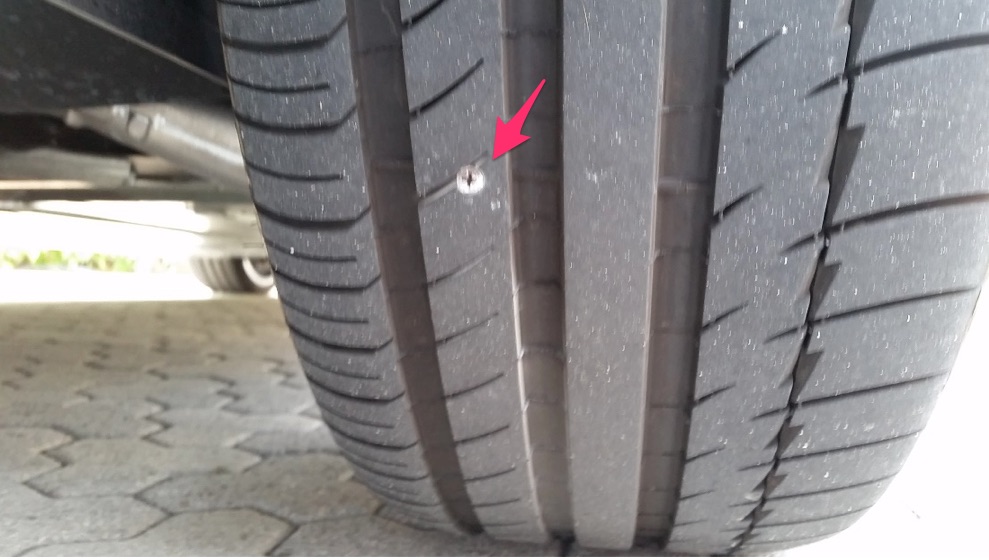 When a regular tire deflates, it simply sags under the weight of the car, the beads pull away from the rim, and the sidewalls flatten onto the road. The weight completely destroys the tire in a few kilometers. Reinforced sidewalls of Runflat tires keep the tire on the rim and successfully support the weight of the car after a puncture and complete loss of pressure.
When a regular tire deflates, it simply sags under the weight of the car, the beads pull away from the rim, and the sidewalls flatten onto the road. The weight completely destroys the tire in a few kilometers. Reinforced sidewalls of Runflat tires keep the tire on the rim and successfully support the weight of the car after a puncture and complete loss of pressure.
In case of a puncture at high speed, the wheel will not explode, the car will not lose contact with the road track).
Most vehicles for which the manufacturer recommends runflat tires do not have a spare tire.
In case of a puncture, you do not have to stand on the road, jack up the car and install a spare tire - just drive to the nearest tire service.
At first glance, everything is fine - RunFlat tires allow you to continue driving even with severe tire damage - though not too far (no more than 80 km) and not too fast (no more than 80 km / h).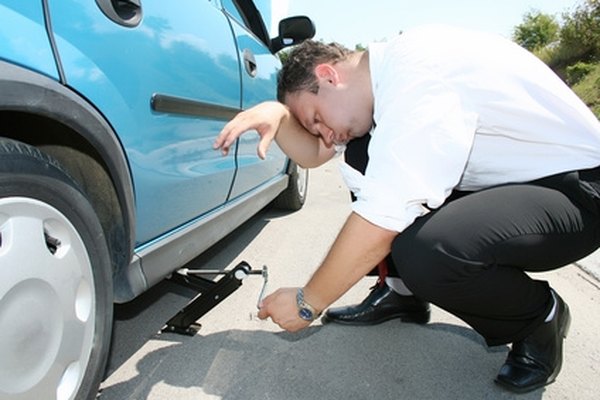 You don't have to think about a spare tire or about problems with changing a wheel. But RunFlat tires aren't perfect. They also have disadvantages:0003
You don't have to think about a spare tire or about problems with changing a wheel. But RunFlat tires aren't perfect. They also have disadvantages:0003
Tires with reinforced sidewalls cost 1.5-2 times more than regular tires.
The manufacturer completes the vehicle with RunFlat tires on the assembly line - the vehicle's suspension must be designed for the use of such tires. It is difficult to predict what consequences the shock absorbers of a conventional car expect from constant driving on tires with reinforced sidewalls. In addition, tire service may not always be found within a radius of 80 km.
The RunFlat technology, based on the reinforcement of the sidewalls of the tire, requires the use of special tire changers to mount and demount the tire on the rim. Not every workshop has such equipment. True, if you do not spare the disk, such tires can also be mounted using a conventional machine, but only if the tire fitter is smart.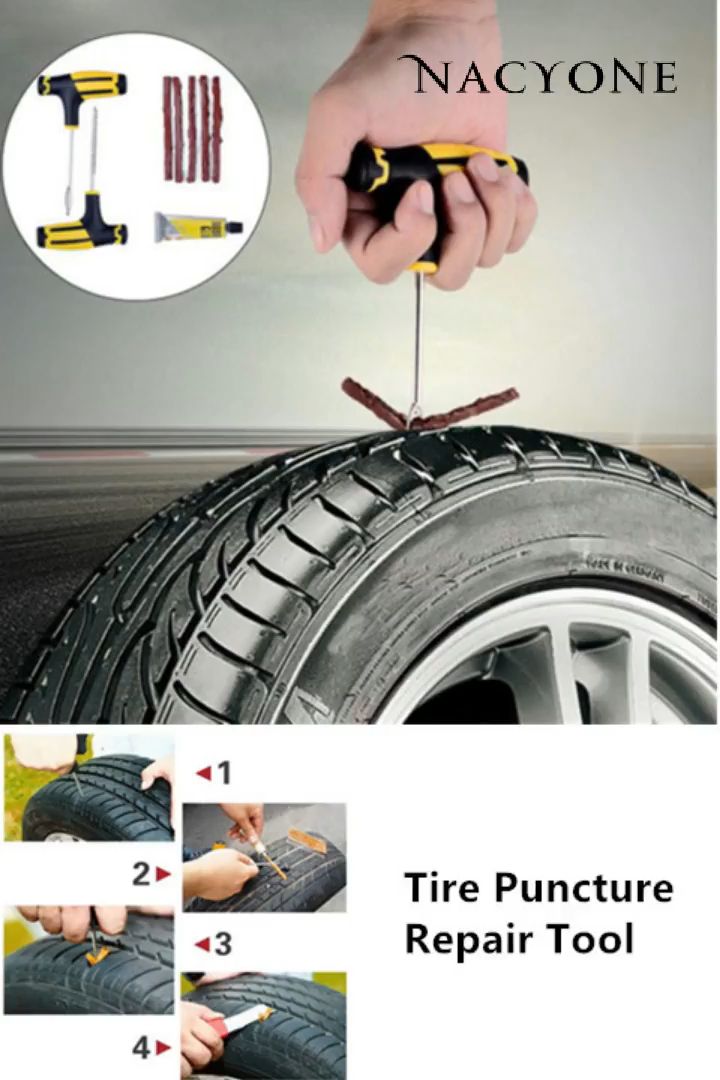
Another nuance of RunFlat tires is that you can often find out about a puncture only by chance, the behavior of most of these tires in normal and punctured states is almost the same. This means that only “de facto” can be found out about the breakdown of one or two wheels. Therefore, a prerequisite for the use of RunFlat tires is that the car is equipped with a tire pressure monitoring system. Otherwise, such tires may not improve safety, but rather harm. For this reason, RunFlat tires should not be used on vehicles that were not factory equipped with RunFlat tires. The reverse rule also applies: the installation of ordinary tires on cars designed for the use of RunFlat tires, even of the same make and model, leads to a sharp deterioration in stability and handling. The obvious reason for this is the difference in stiffness between RunFlat tires and conventional tires, which results in their different cornering behavior.
 Petersburg
Petersburg RunFlat tires are the most technically advanced solution here. They are distinguished by a more powerful sidewall design, which does not allow the tire to "fold" in the event of a puncture. Due to this, even with a full descent of the wheel, you can drive a fairly long distance (up to several tens of kilometers) and at quite a decent speed. In other words, you can definitely get to the tire fitting. Another thing is that the repair of RunFlat tires is in many ways significantly different from the maintenance of conventional tires. Therefore, it should only be trusted by craftsmen with the appropriate experience, qualifications and equipment. In St. Petersburg, specialists from the tire centers of the Kolesa812 online store are ready to provide you with such assistance. we are conveniently located in different areas of St. Petersburg, which shortens your path to quality repairs. All work is carried out promptly using high-tech equipment and reliable materials - and is always accompanied by a quality guarantee.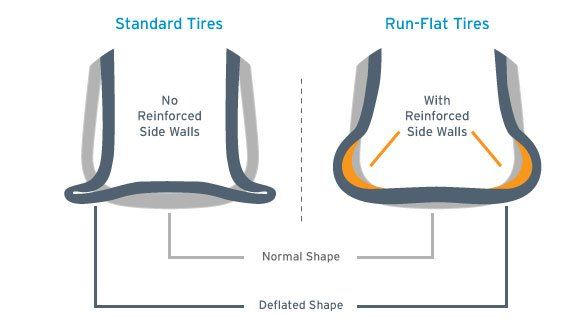
The complexity of restoring such tires directly depends on the nature of the damage:
Punctures on the running surface. The simplest "injury", which is eliminated relatively easily and quickly. Such cuts in RunFlat tires are repaired using traditional methods, after which the wheels run smoothly for a long time.
Sidewall damage. This case is more serious. And it requires a special approach. Repairing the side cuts of tires with RunFlat technology requires restoring not only the integrity of the rubber layer, but also its structural rigidity. Therefore, in this work we use specialized technologies and materials.
Hernias. Even with their high-strength construction, these tires can swell. And the repair of RubFlat hernias is a much more troublesome and difficult task compared to restoring standard rubber. Here you need to understand that a hernia in most cases indicates the imminent death of a tire, but we will do our best to restore its working life to the maximum.
An important point is that in order for the repair of RubFlat tires to be worthwhile, damage must be detected as early as possible. And this is the difficulty, since the rigid design of the tires practically does not show that something is wrong. And with prolonged movement, a simple puncture can turn into a torn tire, which has one road - to scrap. To prevent this, we strongly advise you to use such tires only in combination with sensors, which you can buy in the Kolesa812 online store and install in our tire centers in St. Petersburg.
The specifics of working with such rubber is already evident at the stage of removal and installation. Due to the dense sidewalls, these works require the use of specialized equipment. And each of our tire centers has all the necessary equipment.
Next, you need to determine whether it is possible to repair RunFlat tires in a particular case. We never make unreasonable promises and objectively evaluate the repairability of each tire.